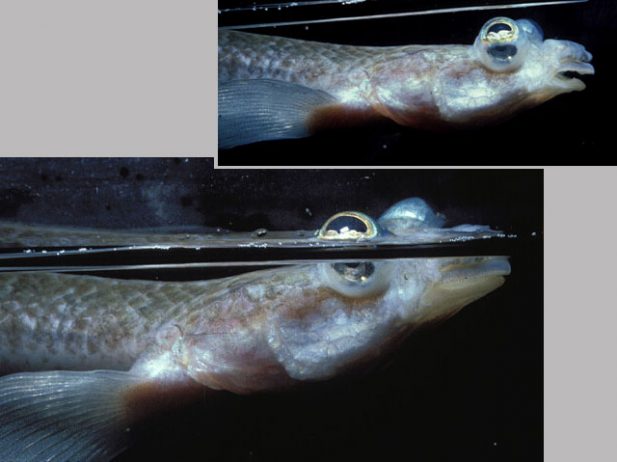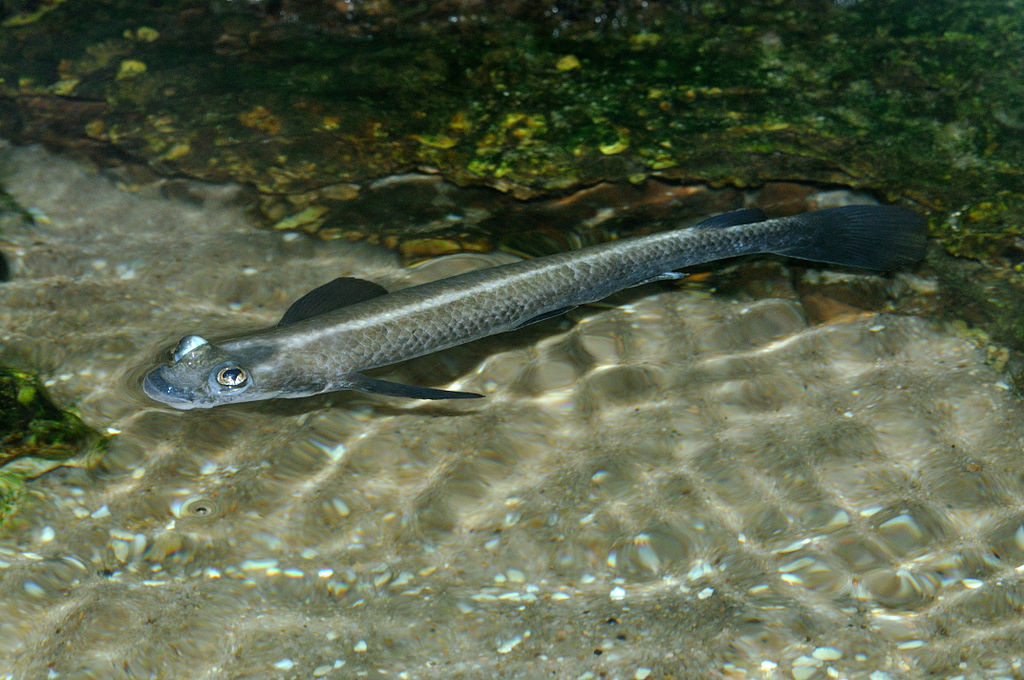The unbelievable four-eyed fish can see underwater and above the surface at the same time. Well, you’d be surprised to know, that there are three recognized species which four eyes. However; a normal human being is well satisfied with two eyes. But sometimes nature is unforeseen to unbelievable things.
The unique four-eyed fishes are a genus, Anableps, of fishes belongs to the family of “Anablepidae”. Their eyes are raised above the top of the head and divided into two different parts so that they can see below and above the water surface at the same time. A. anableps is also recognized for the skill to survive out of water exposed to air, such as during low tide.
Like their relatives, the one-sided livebearers, four-eyed fishes only mate on one side, right-“handed” males with left-“handed” females and vice versa. These fish inhabit freshwater and brackishwater and are only rarely coastal marine. They originate from lowlands in southern Mexico to Honduras and northern South America. There’re presently three recognized species in this genus, which are Anableps anableps (Largescale four-eyes), Anableps dowei (Pacific foureyed fish), and Anableps microlepis (Foureyes).
These fishes like to spend most of their time at the surface of the water, and they like to eat mostly terrestrial insects which are readily available at the surface; though their foods also consist of other foods such as other invertebrates, diatoms, and small fishes. Interestingly these fish will group contrarily depending on the species. A. anableps usually congregate in schools.
A. microlepis also is gregarious, but restricts its schools to about a dozen individuals; it is also recorded to be found singly or as couples. These fish have exclusive anatomy for reproduction. Because four-eyed fish have sex organs that are either turned to the left or to the right side of their body. Hence, a “left” male can only mate with a “right” female and vice versa. They give birth to live young
In the physical characteristics, these species have a maximum length of up to 32 cm TL in A. microlepis, making this species the largest in the order Cyprinidontiformes. Although these fish are one-sided livebearers and their reproductive organs are exclusive to their subfamily, their characteristic is only shared with the related genus Jenynsia.
The unique four-eyed fishes only have two eyes each, but the eyes are particularly adapted for their surface-dwelling lifestyle. The eyes are incredibly well positioned on the top of the head, which can fish make float at the water surface with only the lower half of each eye underwater.
Whereas the two halves are well divided by a band of tissue and the eye has two pupils, linked by part of the iris, and the upper half of the eye is adapted for vision in air, the lower half for vision in water. Hence; the lens of the eye also changes in thickness from top to bottom to account for the dissimilarity in the refractive indices of air versus water.



